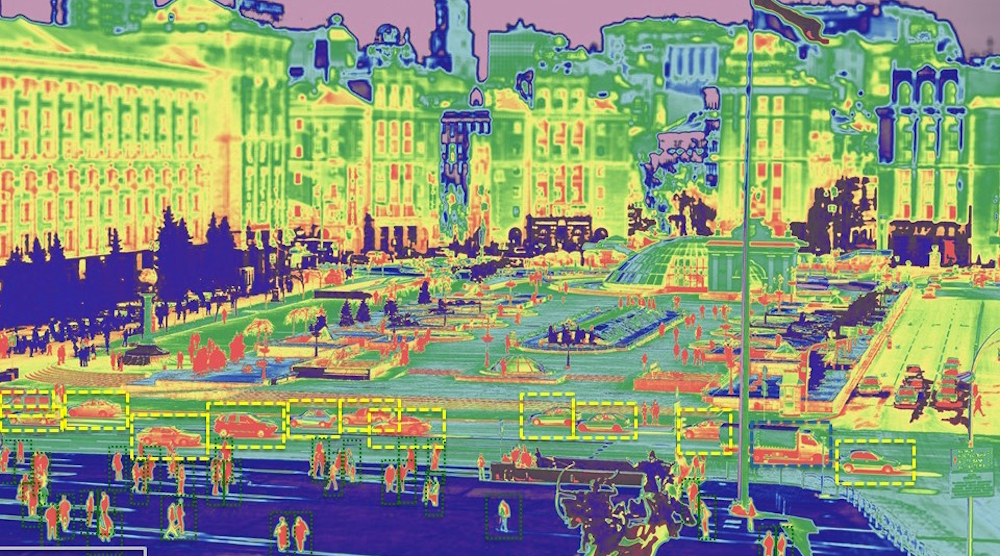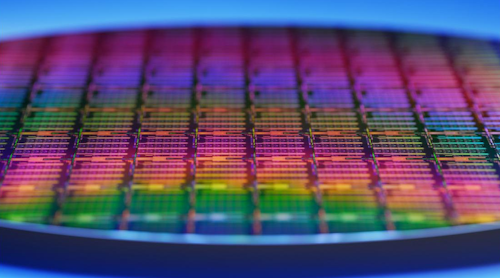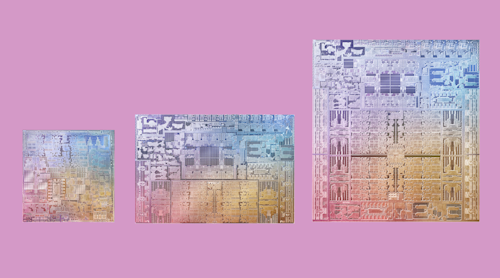For years, Intel has traded in a familiar brand of computing. It creates the tiny processors inside desktop computers, laptops, and data centers powering internet services like email. But lately the chipmaker has eyed specialized processors that handle images better than keystrokes.
Last year, Intel licensed machine vision chips from General Vision for its wearable Curie module. This year, the company bought a start-up that writes machine vision algorithms for different types of hardware. Brian Krzanich, Intel’s chief executive, has stressed that its FPGA chips can be used for processing and classifying images.
On Tuesday, Intel added to its stockpile of machine vision hardware, announcing plans to buy chip startup Movidius. With customers like Google and Lenovo, the startup is known for making low-power SoCs that find patterns and recognize objects in images.
The chips consume so little power that they can perform image recognition without help from the cloud. That, according to Josh Walden, general manager of Intel’s New Technology Group, makes them ideal for tiny connected devices that make decisions based on what they see. That includes everything from smartphones and sensors to security cameras and drones, he said in ablog post.
“Computer vision will trigger a Cambrian explosion of compute,” said Walden, referring to the evolutionary event that started more than 540 million years ago and produced most of the major animal groups on earth.
Movidius’ chips are based on its vision processing unit (VPU), which takes tricky machine vision tasks out of the main processor’s hands. A standard processor would consume too much power and generate too much heat handling the same tasks. VPUs sip a few hundred milliwatts, making it sensitive to the batteries inside tiny devices.
In addition to the hardware, Movidius also develops algorithms for deep learning, a type of program that forms abstract concepts by studying huge amounts of data. Movidius’ chips are efficient enough to conduct deep learning tasks, like identifying objects, inside devices. Usually, these tasks are carried out in the cloud, which handles most of the processing.
Intel said that it would work toward using Movidius’ chips with its RealSense 3D cameras, which are designed to sense depth and track human motion. The combination, according to Intel’s Walden, could be used in technologies ranging from collision avoidance for drones to eye tracking for virtual reality headsets.
Intel has fiercely promoted its RealSense camera in recent years. At the Intel Developers Conference last month, it was the focal point of several big announcements, including Intel’s Project Alloy virtual reality headset and autonomous drone piloting system. A new version of the RealSense camera also factored into the new Euclid and Joule modules.
“When computers can see, they can become autonomous and that’s just the beginning,” said Remi El-Ouazzane, Movidius’ chief executive, in ablog postabout the deal. He said that merging Intel’s cameras with Movidius’ chips will enable devices to “understand their surroundings and navigate accordingly.”
Investors have also acknowledged the potential for Movidius’ vision chips. Founded in 2006, the fabless chipmaker defied investor apathy for chip startups and raised $86.5 million in funding. The San Mateo, Calif.-based company has about 180 employees.
Movidius also supplies chips to the same hardware makers that Intel is courting with its own processors. Google used the chips inside itsProject Tangotablets and later licensed Movidius’ processor design for other devices. In June, Lenovo said that it is using Movidius’ vision chips in its virtual reality headsets. The chipmaker has also worked with drone manufacturer DJI and thermal camera maker FLIR.
Neither company revealed terms of the deal.
But Intel has not been stingy in acquiring new chip designs. It paid $16.7 billion last year to acquire Altera's FPGA technology. Last month, technology news site Recodereportedthat Intel paid over $400 million for Nervana Systems, a start-up making server chips for artificial intelligence. Founded in 2014, Nervana had raised $24.4 million in funding.
For Intel, the acquisition marks its latest bet on the Internet of Things, which it has said is the fastest growing part of the company. It represents another ripple from Intel’s decision this year to eliminate 12,000 jobs and de-emphasize its PC business.
El-Ouazzane said that Movidius dovetails with Intel other business efforts around cloud computing and 5G wireless networks.
“Movidius has been attacking this challenge from the device level,” he said in a blog post. “At Intel, we will be part of a team that is attacking this challenge from the cloud, through the network, and on the device.”













.png?auto=format&fit=crop&h=139&w=250&q=60)


